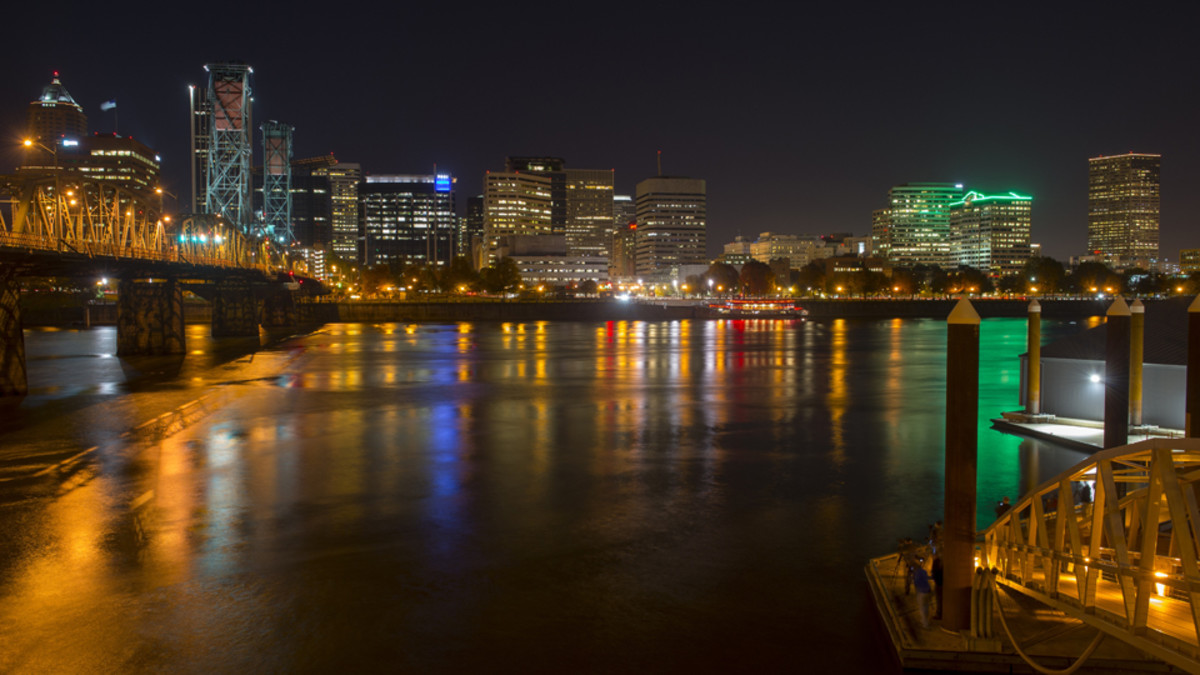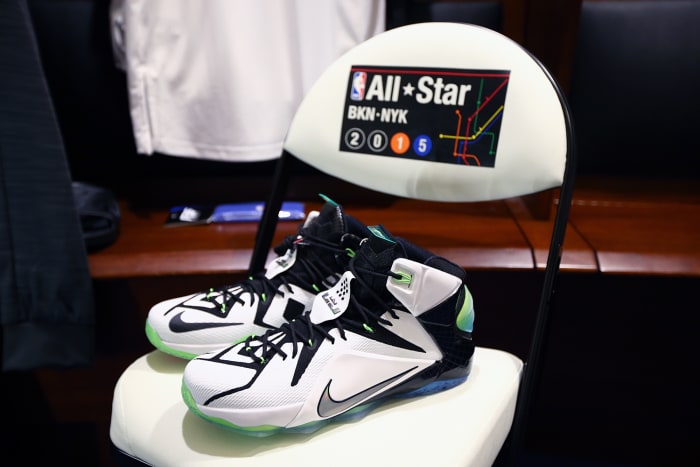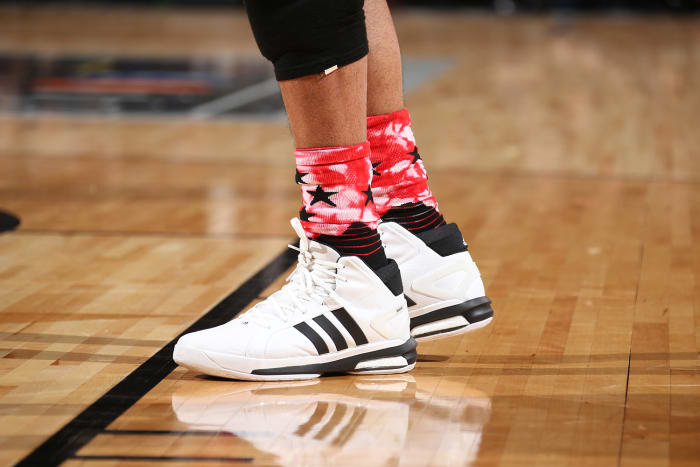
Portland proves itself as the performance shoe capital of the world
PORTLAND, Ore. — Waiting in a line that snakes around downtown Portland’s hip and funky VooDoo Donuts offers up plenty of examples of just how folks in the Pacific Northwest “Keep Portland Weird.”
Take a look, though, at the feet of those in line and chances are that if visitors have on a pair of performance shoes, those shoes were designed right there in Portland. But there's nothing weird about Portland turning into the performance shoe capital of the world.
And it isn’t just about Nike. Or Adidas. Or Under Armour. Or even Columbia, Mizuno, Keen or Bogs, to name a few. Portland has taken over the performance shoe industry from top to bottom.
“Portland is an interesting city,” Dick Lyons, Mizuno’s senior vice president, product divisions, tells Edge. “It has creativity and is not afraid to break the norms when it comes to design. The city has a stronghold of sports design, yet also offers design in other areas as well, which I think lends to more ingenuity and inspiration within the sports sector.”
All the creativity keeps drawing companies. And designers.
Portland turned synonymous with Nike, which interestingly enough is located just outside the city in Beaverton. While Nike has built itself into the world’s largest athletic footwear brand since its creation in 1971, the Swoosh has also served as the foundation for Portland’s growth.
Training with Mix Diskerud: NYCFC's new star on how to develop fast feet
Adidas and Columbia have helped pave the way too. Adidas, based in the same German town as Puma, formed a U.S. subsidiary in 1993, locating in Portland.
“Having our North American headquarters based in Portland (along with Nike) makes the city a natural epicenter for the industry,” Adidas spokesperson Lauren Lamkin tells Edge, while explaining the company has recently moved additional portions of its global operations and creative development to Portland.
Founded in 1938, Columbia Sportswear may know Portland better than anyone. What started as a hat company launched into footwear around 1993, the same time Adidas was moving to town.
While Adidas and Nike put a focus on everything from soccer cleats to basketball sneakers, Columbia grew up in the outdoor world, opening with the Bugaboot and building on that with hiking, trail, fishing and more.
“Is Portland a great design place and then turned into the home of some powerhouses like Nike?” asks Mark Nenow, vice president of Columbia’s footwear. “Or because Nike planted its flag here in the beginning, was that the catalyst? It is tricky. Portland has become a real creative place, a real unique place. It is really a melting pot of a lot of creative thinking, energetic and inspiring people. The footwear business feeds off that.”
Show me the money: How action sports stack up against the "Big 4"
With so much talent in town in the 1990s, Portland’s footwear design community has grown. Japan-based Mizuno opened a Portland office in 2005 and it has grown steadily since, even attracting key Japanese-based employees. Baltimore-based Under Armour, now the nation’s number-two athletic apparel manufacturer, opened a Portland design office in 2013.
“You can’t understate the impact of the history of footwear design and development in Portland and how this has led to where we are today,” Lyons says. “Footwear design talent has obviously migrated here over the years and this has helped develop a culture of builders and creators in Portland that has attracted many other brands.”
Then you have the small companies too, such as a young Bogs, which started in Eugene in 2002 and moved to Portland in 2011. “Portland was chosen because we recognized that we needed talented people to grow our business,” Bill Combs, president and founder of Bogs, tells Edge. “The access to the outdoors and the high quality of life didn’t hurt either.”
“You can’t underestimate the design talent that resides in Portland,” Lyon says. “Along with Boston on the East Coast, it’s really established as one of the two main hubs for footwear design and development in the U.S.”
So, while Boston folks may still want to hold onto a footwear fashion title, they may have to give up any hope of the performance title. “You might get some pushback from the Beantown crowd,” Nenow says. “Boston has been an interesting center of footwear as well. I think when straight-up athletic, yes, (Portland is the capital).”
Sam vs. the Volcano: Sam Cossman's journey 1,200 feet to a lake of lava
As companies found the creative talent they craved in Portland, other pieces of the manufacturing pipeline started falling into place. For talent, the Pensole Footwear Design Academy focuses on footwear design, while the Eugene-based University of Oregon offers a master’s curriculum in footwear design based in Portland.
The allure of a city that combines big-city amenities with small-town charm, healthy lifestyles, sports and creativity helps draw talent already successful in the industry, says Lamkin.
All the pieces, says Nenow, have fallen into place, from merchandising, materials, development and sourcing. “All the A-to-Z components around the footwear business,” he says, “all the supply chain, a lot of things are forming.”
By bringing together design and business, Portland can attract talent from all over the world. “For people who want to get into this industry through design, merchandising or other parts of the business, Portland is...an attractive spot,” Nenow says. “It is not specific from this brand to that brand, but in general is lifting up Portland and that is helpful to everybody.”
Combs says from creative agencies to custom fabricators, having so many players—big and small—in one place bulks up the talent pool.
NBA All-Star Game: Sneaker Roundup
Kevin Durant
Carmelo Anthony
LeBron James
John Wall
Jimmy Butler
Kyrie Irving
Chris Paul
Tim Duncan
Al Horford
DeMarcus Cousins
Spike Lee
Chris Bosh
Pau Gasol
Kyle Lowry
Paul Gaudio, Adidas’ global creative director, recently moved from Germany to Portland. He tells Edge that the array of interests in the town help to build a well-rounded design community. “Portland is not a traditional sports town,” he says. “Portland has the Blazers, Timbers and high school sports, but our proximity to the ocean, mountains, desert, lakes and rivers have fueled the outdoor sports/action sports culture.”
When it comes to building performance footwear, testing it proves important. And in Portland, landscape is certainly available, especially for companies like Bogs, which relies on technology that keeps feet dry and comfortable in the outdoors.
“We have recently expanded our business into new footwear categories,” Combs says. “This growth would have been more challenging if we didn’t have Portland’s creative talent and footwear knowledge easily accessible.”
Lyons says that testing ability extends beyond a hiking trail. The region’s “ideal climate” offers proximity to all types of terrain. “You do not have to travel far to test shoes on varying degrees of terrain,” he says. “There is also a large supply of runners in the market which makes it much easier to test products, catch potential new trends and capture feedback.”
Tech Talk: KOTA adds new technology to the longboard skateboard
Almost every footwear brand will use the word “innovation” somewhere during a marketing discussion. Proprietary technologies, though, do differentiate companies, as do product design. The Pacific Northwest has proven adept at creating new technologies. But of course, you’ll always need to add that in with that “Keep Portland Weird” culture.
“There is no performance without style,” Nenow says. “When it comes to footwear, we believe that. That is one of the laws of our universe. It is about design. We make sure it performs for the end use, but also a piece of beauty on the shoe wall or on the consumer’s foot.”
As Columbia works toward that goal of creating high-tech—and often waterproof—products that look alluring, so does Nike and everybody else. Being close by allows all the companies, from the small Bogs to the massive Adidas to keep an eye on what others are doing. And while each company will create out of their own niche and ability, having an awareness of others can help to build that “creative signature” that keeps each brand separate.
Combs says Portland priding itself on being different helps Bogs “be different, but be different with a purpose.”
Ultimately, though, locating in Portland equals access. Access to the pipeline associated with designing footwear and access to a growing and historical pool of creative talent. Combined together, Portland serves as the world’s capital of performance shoes. Weird.
Tim Newcomb covers stadiums, design and gear for Sports Illustrated. Follow him on Twitter at @tdnewcomb.





















